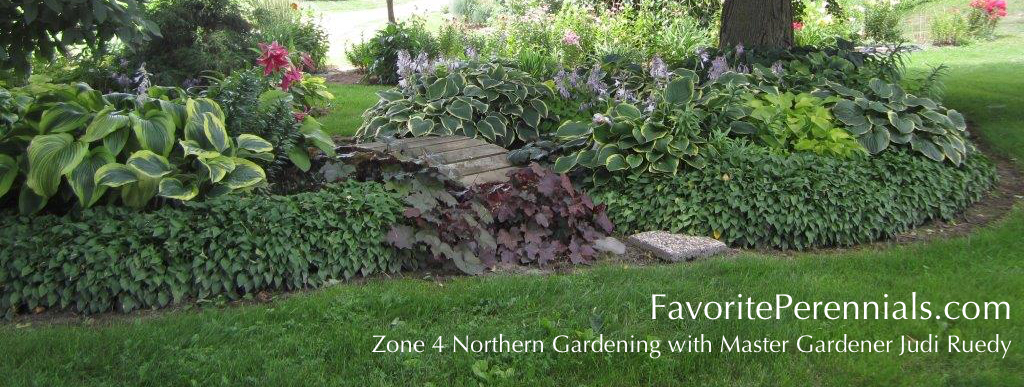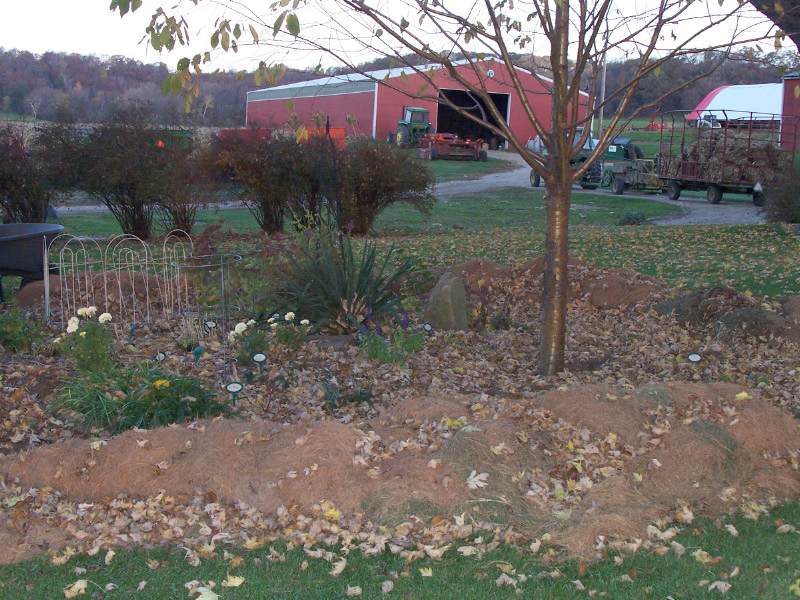Pine Needle Mulch for Gardens
Pine needle mulch is a less expensive alternative to purchasing mulch. Learn how your gardens and flowerbeds can benefit and keep the weeds at bay with this eco-friendly product you can make yourself.
Wouldn’t it be nice if the mulch for perennial beds didn’t have to cost so much?
Wouldn’t it be nice if it was free?
Take a look at my pictures and look at the piles of leaves and pine needles that I have bagged up with my lawnmower and will use to put on my perennial beds later this fall.

Eco-Friendly Free Mulch
It is a wonderful way to re-use something from nature and to save a whole bunch of money next spring when I won’t have to purchase so much shredded bark.
A few years ago, maybe 6 or 7, there was a speaker on Continuous Bloom that I went to see, named Pam Duthie.* She has written 3 or 4 books on gardening, and lives in Illinois. That was the first time that I had heard of using chopped up leaves as major garden mulch.
She said she double mowed all her leaves and then once the ground freezes puts a 5-6 inch layer on all her beds. It is compost, very simply.
She said by spring the leaves have mulched down to about 3 inches and that then keeps the moisture in the soil and the weeds out.
I used her idea on parts of my beds a bit but never really got into it until more recently. Three years ago, I started doing it in earnest. We put in a new perennial bed that was adjacent to the large pine trees on the lawn and so that first fall I covered the bed with the pine needle mulch and whatever leaves that happened to be in the area.
I put the needles on maybe 4 inches thick of so that first year.
Last fall I added more.
Lots more.
It works wonders to keep weeds out.
I only have problems with weeds creeping in from the outside of the bed with the thick layer of pine needles.

Are Pine Needles Good for Your Plants?
People always ask me if the acid in the pine needles is good for the plants. Well it must be as the plants are all doing well. I have read and also heard from an Extension Person that no, there isn’t too much acid in using the pine needles, and using pine needle mulch is fine. It would have to be many more times the amount I have used to be cause for concern.
Last fall then also, I put the pine needles and chopped leaves on another bed by the house and this year I am saving all of them (every last one that doesn’t blow away) to use as mulch for the ground around the plants.
You can use pine needle mulch on perennials like the ones on this page.
(Other years I would get tired of collecting them all and dump them instead in the cornfield next to the lawn and they would get worked into the soil with the chisel plow when my son did the fall tillage.)
I estimate I will save anywhere from $300. to $500. next year by doing this and it is all done in the fall when plants are cut down and much easier to spread on.
Think of doing this in your perennial beds and saving some $$$ next spring.
Related Reading: Fall Mulch Tips
*Pam Duthie was the Keynote Speaker at the Master Gardener Spring Into Gardening Seminar held on March 5, 2011 at the Lunda Center in La Crosse, WI.
Before you go, if you are interested in growing vegetables, here is a website site I recommend on beginner gardening, and how to grow a successful vegetable garden.


Thanks for sharing this! I had no idea that pine needle mulch could be so beneficial. I might have to go to a store and look for some mulch for my garden. Lately, they have been struggling a bit, so I want to help them as much as I can.